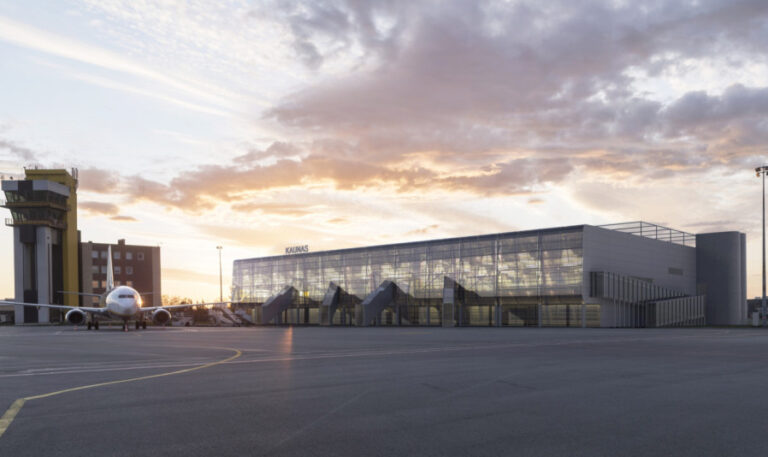Lithuanian Airports has awarded general contractor Infes a €17.7m (US$19.4m) contract to expand the Kaunas Airport passenger terminal by mid-2025.
The entire expansion project will be implemented at the expense of Lithuanian Airports and will double passenger capacity to two million passengers per year. The contractor is expected to start work in 2024 and finish in mid-2025.
According to the airport’s data, the airport will handle about 1.3 million passengers in 2024. Therefore, the arrival and departure areas will require expansion. The reconstruction will initially extend the side parts of the current terminal – the eastern and western façades of the building.
The total area of the terminal is expected to increase by around 4,400,000m2 and the airport will be able to handle up to six passenger flights per hour as opposed to the current four. Changes are planned on all three floors of the terminal. Baggage claim areas will be expanded, Schengen and non-Schengen arrival areas will be enlarged, and additional spaces will be created for passengers to wait for flights, eat or shop. This will also increase the airport’s revenue from commercial activities.
Kaunas Airport will also introduce automated passport screening solutions and a new generation of hand luggage scanners that are already being tested at the airport. Staff will be able to see and analyze passengers’ electronic devices in 3D without travelers having to remove the items from their hand luggage during security screening. This is intended to speed up the screening process.
Kaunas Airport will operate as normal during the expansion works, although there may be short-term inconvenience for passengers and partners.
Arnas Dūmanas, director of the development department at Lithuanian Airports, said, “Kaunas Airport is demonstrating very strong passenger growth rates that far exceed the design capacity of the existing terminal building, so expansion is essential. The expanded terminal will be able to handle twice as many passengers – around two million travelers per year in total. This will respond to current travel trends and future growth prospects. Passengers will have more space and more technological advances, which means faster procedures and more comfortable waiting for flights.”
For more key construction and architecture updates from the passenger terminal industry, click here.

